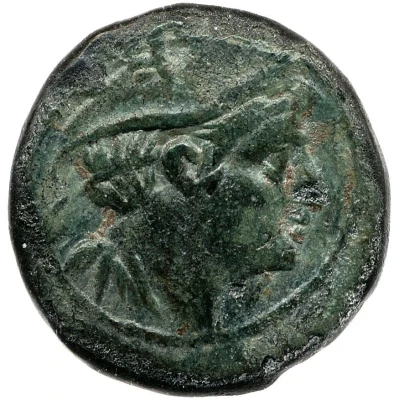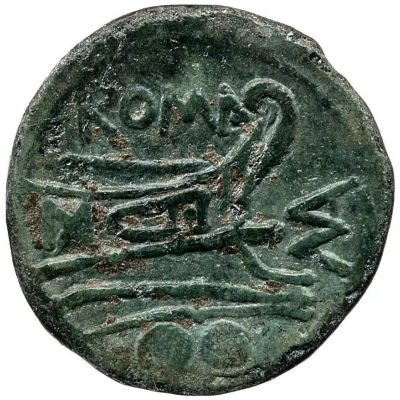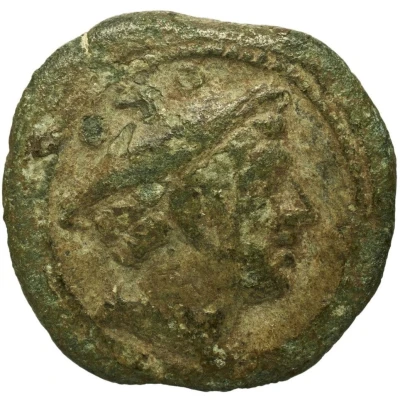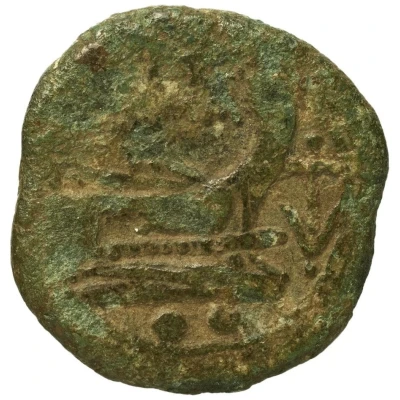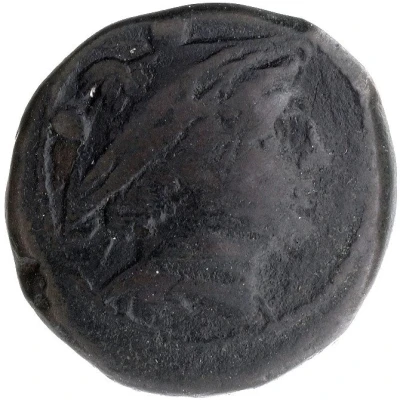


© American Numismatic Society (ANS)
Sextans C. Aurunculeius; ROMA 209 BC
209 BC year| Bronze | 3.41 g | 20 mm |
| Issuer | Rome › Roman Republic (509 BC - 27 BC) |
|---|---|
| Issuing entity | C. Aurunculeius |
| Period | Republic (509 BC - 27 BC) |
| Type | Standard circulation coin |
| Year | 209 BC |
| Value | Sextans (1⁄60) |
| Currency | Denarius of 10 Asses (221 – 141 BC) |
| Composition | Bronze |
| Weight | 3.41 g |
| Diameter | 20 mm |
| Shape | Round (irregular) |
| Technique | Hammered |
| Orientation | Variable alignment ↺ |
| Demonetized | Yes |
| Updated | 2024-10-06 |
| Numista | N#385505 |
|---|---|
| Rarity index | 100% |
Reverse
Prow, right; above, inscription; before, mark (monogram of AVR); below, denominational mark.
Script: Latin
Lettering:
ROMA
AVR
●●
Unabridged legend:
ROMA
C. Aurunculeius
Translation: Rome
Comment
Aurunculeius was praetor in 209 BC in Sardinina and propraetor in 208. His coins are marked with the monogram AVR.Minted in Sardinia
Weight varies from 3.3g-5.03g
Interesting fact
The Sextans coin was part of a series of coins issued during the Roman Republic that featured the bust of a Roman goddess on one side and a mythological scene on the other. In this case, the Sextans coin features the bust of Roma, the goddess of Rome, on one side and a scene of Hercules fighting a lion on the other. This coin was issued during the reign of C. Aurunculeius, who was a moneyer in Rome at the time. Despite being made of bronze, the Sextans coin was still considered a valuable form of currency in ancient Rome, with a value of six asses or one-third of a denarius.
